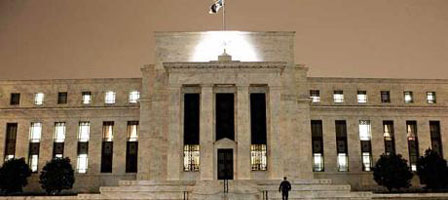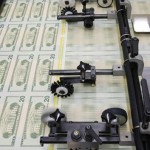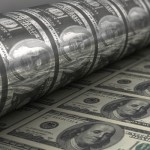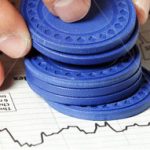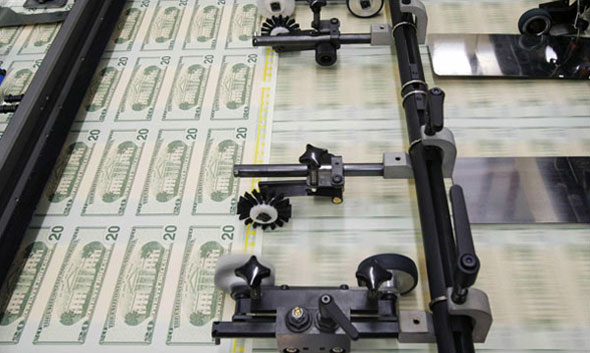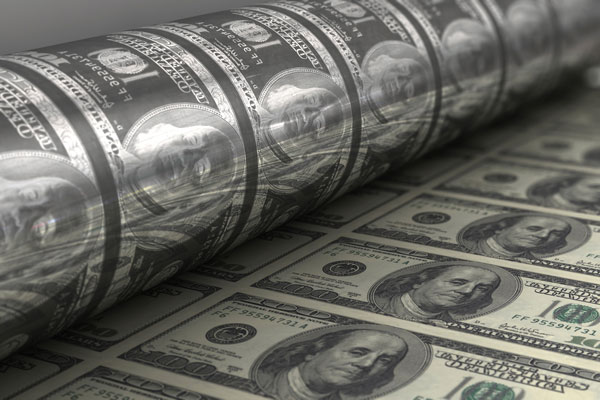Perhaps the most frightening aspect of the US Federal Reserve’s decision to “print” money on a mind-boggling scale is that if it fails to trigger stronger, sustained growth in the economy, it will seriously damage public confidence in the competence of central banks and governments.
That will make businessmen and consumers even more cautious about expanding the investment or consumption that is necessary to restore normal growth in the world economy.
Some experts have already targeted the US central bank’s policies as the principal cause of the financial and economic disasters of recent years and the poor recovery.
Jeremy Grantham, for example, the highly-regarded chairman of fund management group GMO, recently penned a magnificent condemnation of the Fed’s policy of manipulating interest rates to keep them artificially low. Here are the key points he made:
It doesn’t work: The growth rate of the American economy has fallen despite a tripling of debt relative to GDP over the past 28 years.
In normal times, the favourable economic effects of low interest rates are minimal, if any, and come packaged with a “very dangerous game of asset price stimulus involving booms and busts.” In these abnormal times it’s quite likely that the effects are negative, actually holding back economic recovery.
It promotes speculation: “Lower rates… produce higher-priced and therefore less rewarding investments, which tilt markets towards the speculative end. Sustained higher prices mislead consumers and budgets alike… Subsidized debt – debt at manipulated rates, in contrast to normal debt at market clearing prices – has a large, profound and dangerously distorting effect on market prices.”
There is a short-term stimulus from higher asset prices brought about by cheap credit – mild in the case of equities, intense in the case of residential property. But such benefit is “all given back with interest as bubbles break and even over-correct, causing intense financial and economic pain.”
Over-stimulated asset prices also seduce states, municipalities, endowments and pension funds into assuming unrealistic future returns, setting them up for financial crises.
If markets are efficient, why manipulate them? The previous and current chairmen of the US central bank, Alan Greenspan and Ben Bernanke, both implied or stated outright that markets could be left to self-correct as they were overwhelmingly efficient – “yet they themselves manipulate the prices to help in the recovery from a recession!
“We have discovered twice in a decade, and may discover again in a year or two, that this asymmetric policy of stimulating stock moves by setting artificially low rates, and then leaving the bull markets, when overstimulated, to bubble over, is dangerous,” Grantham says.
The real-estate bubble: “The housing market is much, much more dangerous to mess with than stocks, as is clearly illustrated by the Greenspan-instigated, remarkable and disastrous housing bubble of 2002-06.”
Because, compared to equities, houses are more broadly owned, more easily borrowed against, and are seen as a more stable asset, the wealth effect of boosting their prices is much greater. “Rising house prices were initially a potent boost to the economy.” But later they became “a lethal weapon.”
As the Fed drove down global interest rates, formerly staid financial institutions in Europe and Asia hungry for a few basis points of extra return bought into cleverly-packaged US investment products, lacking transparency, that included low-grade mortgage loans produced by extremely sloppy loan-granting standards and aggressive promotional incentives.
This was only possible if there existed “an institution with a truly global reach and a commitment to drive asset prices up – in the US Fed, under the Greenspan-Bernanke regime, just such an institution was ready and willing.”
The jobs crisis: The housing bubble was particularly dangerous because it caused a great surge in home building. It temporarily created jobs that masked an underlying problem developing in the American labour market – the contraction in jobs for mid- and lower-skilled workers because of competition from abroad and technological change favouring the highly-educated.
The millions of jobs lost now by the halving of house construction won’t reappear for ten or 20 years. The more fundamental problem in the labour market is now painfully clear.
What makes the situation even worse is that the housing bust has reduced labour mobility because so many of the unemployed cannot move to jobs elsewhere because they are stuck in homes worth less than they owe on mortgage loans. Free flow of labour across state lines is now at the lowest percentage ever recorded.
The local government crunch: The Fed’s cheap-credit policies have also had a devastating effect on the finances of state and local governments. First they inflated tax revenues, largely geared to property and equity values. Budgets became based on assumptions that those values would stay high and continue increasing. Now the capital gains in equities have largely disappeared and property taxes have collapsed.
The trust funds crunch: Pension and endowment funds are also in trouble because they based their payouts on average values of assets that are now seen to have been abnormally high.
Unwise behaviour incentivized: Asset price manipulation by the Fed fooled individuals “into believing that the market signals were real, that they truly were rich. “They acted accordingly, spending too much or saving too little, all the while receiving less than usual from their overpriced holdings…
“Capital was substantially misallocated, with billions being raised for worthless dotcom companies and massive overcommitment to fibre optic cable. Even worse was the excessive percentage of GDP spent on the overbuilding of homes – basically, a non-productive asset.”
Bias against the soundest companies: Asset price manipulation changes the normal workings of capitalism and the market. Weaker companies need more debt. Artificially low rates engineered by the Fed mean that leverage is less of a burden and survival is easier.
“The Great Bailout allowed many companies that normally would have failed and been absorbed by the stronger or more prudent ones to survive.” The past decade has been “artificially favourable” to marginal and leveraged companies, partly at the expense of conservative, unleveraged firms. The latter seemed less attractive investments on a relative basis, and missed opportunities to pick up failing enterprises that they would normally have acquired at attractive prices.
Bias against the thrifty: Another great disadvantage of asset price manipulation is that “when rates are artificially low, income is moved away from savers, or holders of government and other debt, towards borrowers.
“Today, this means less income for retirees and near-retirees with conservative portfolios, and more profit opportunities for the financial industry; hedge funds can leverage cheaply and banks can borrow from the government and lend out at higher prices or even, perish the thought, pay out higher bonuses.”
The benefits of dramatically-recovered financial profits despite low levels of economic activity flow to a considerable degree to rich individuals.
Now… a flood of money: The Fed’s current policy of a second round of quantitative easing, which could produce a currency war that leads to a drastic decline in international trade, is “the last desperate step of an ineffective plan to stimulate the economy through higher asset prices regardless of any future costs.”
Conclusion? “All the beneficial effects to the real economy caused by rising stock or house prices will be repaid with interest.. And this will happen at a time of maximum vulnerability.”
Grantham accuses the previous and current chairman of the Fed of having been, not only “almost criminally inept” by ignoring bubbles in investment asset markets – “they have also deliberately instigated them as a policy tool.
“Since we continue to be at Bernanke’s mercy and Greenspan’s spirit is still alive and well, could things be much worse!”
CopyRight – OnTarget December 2010 by Martin Spring
